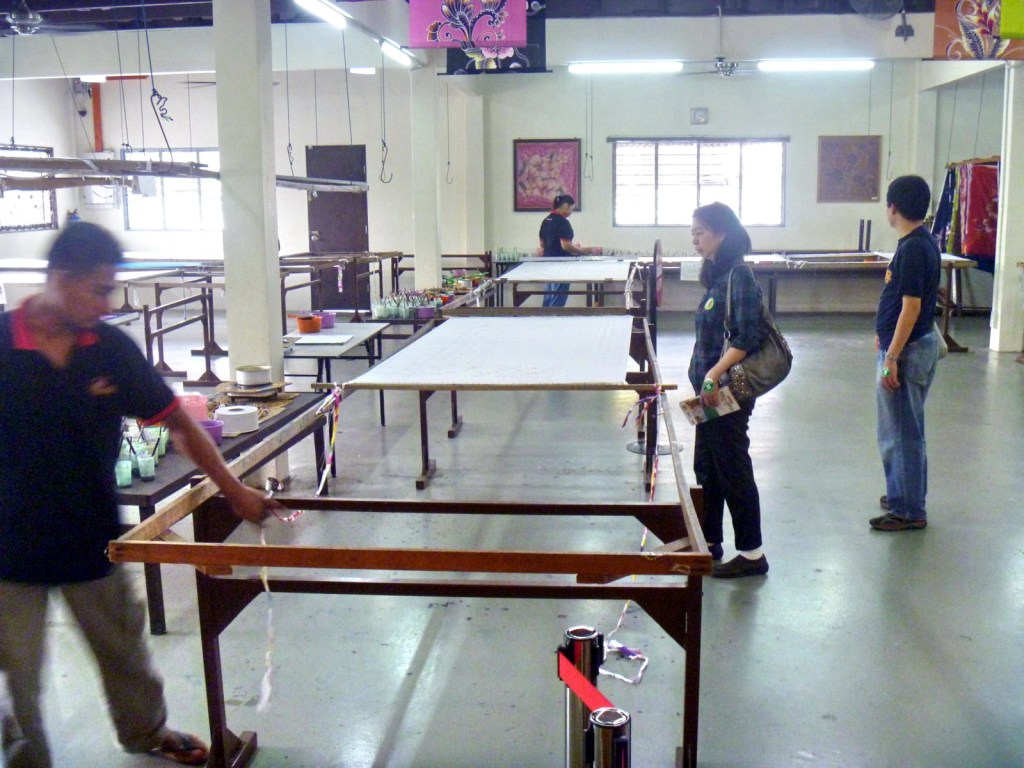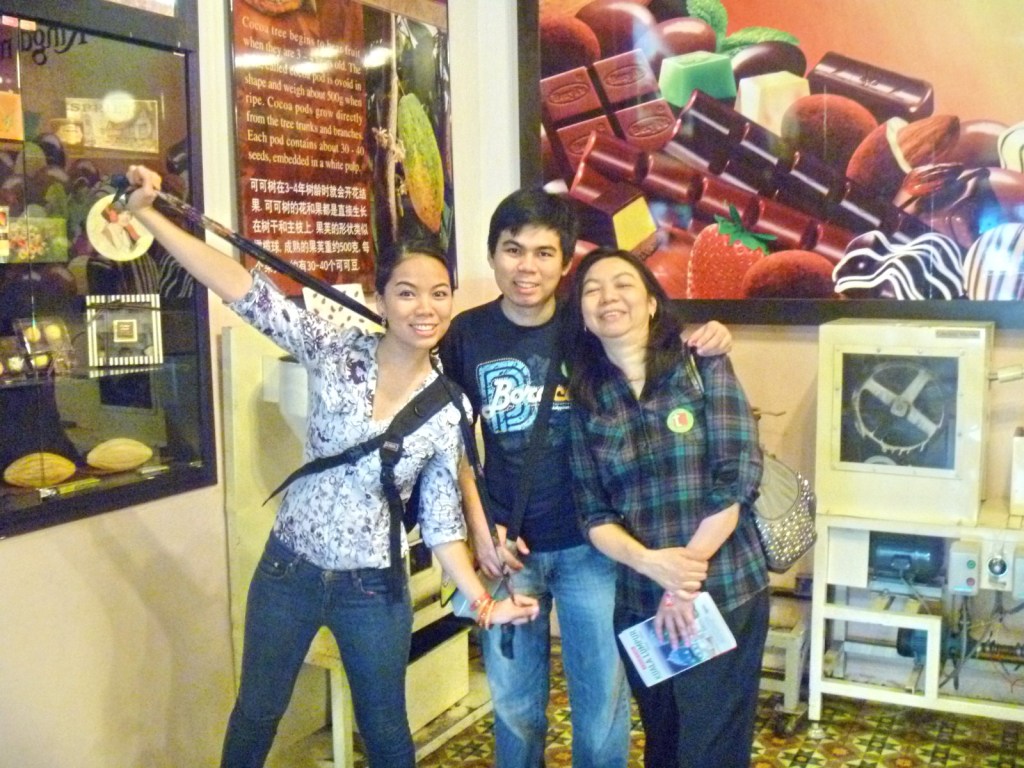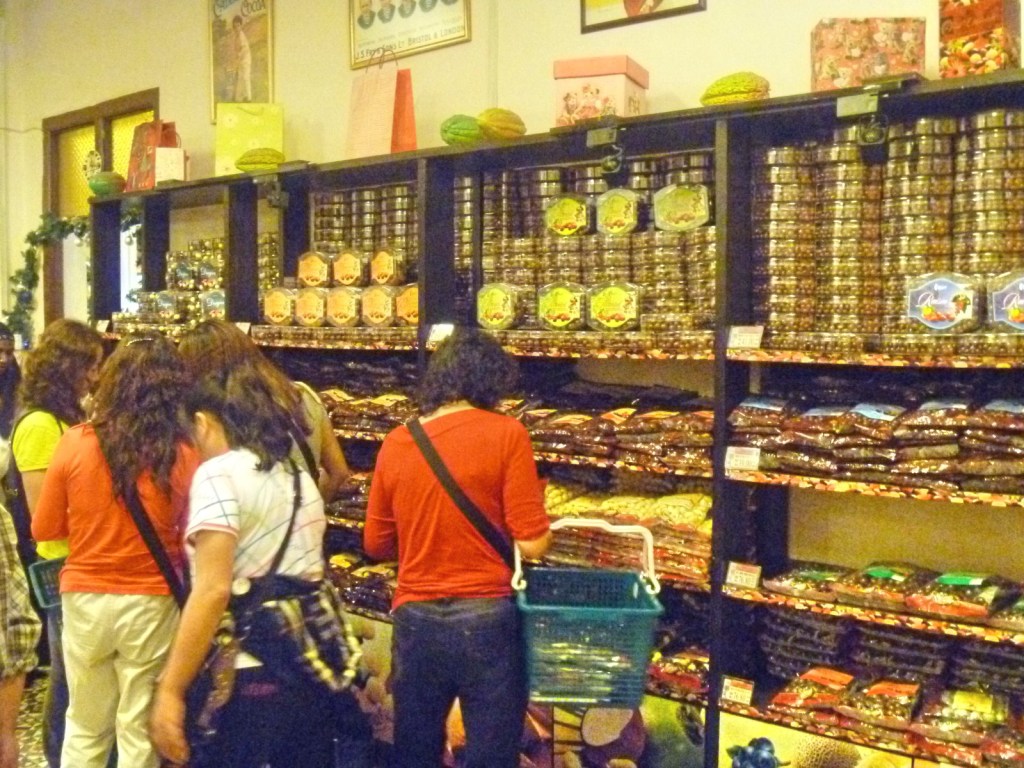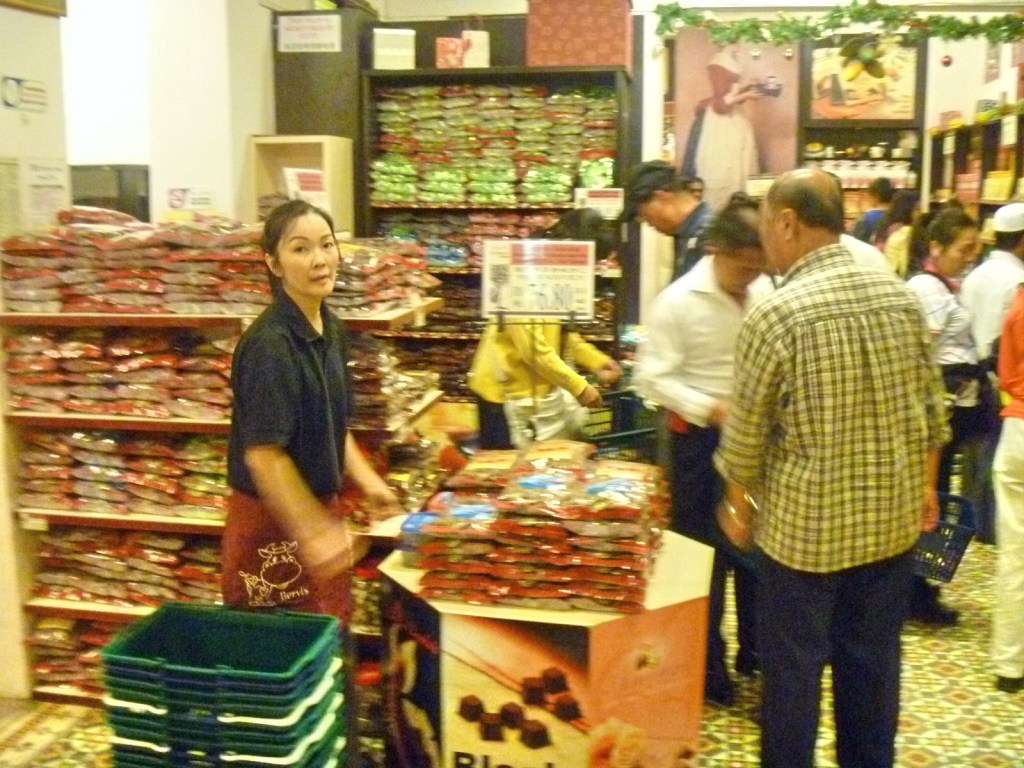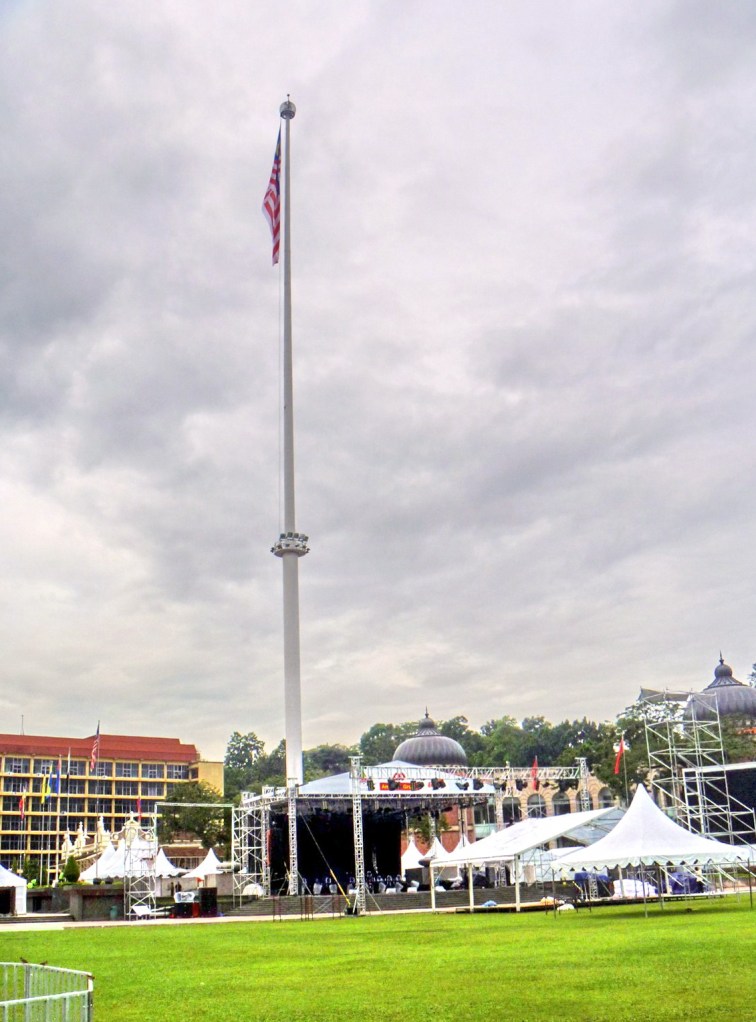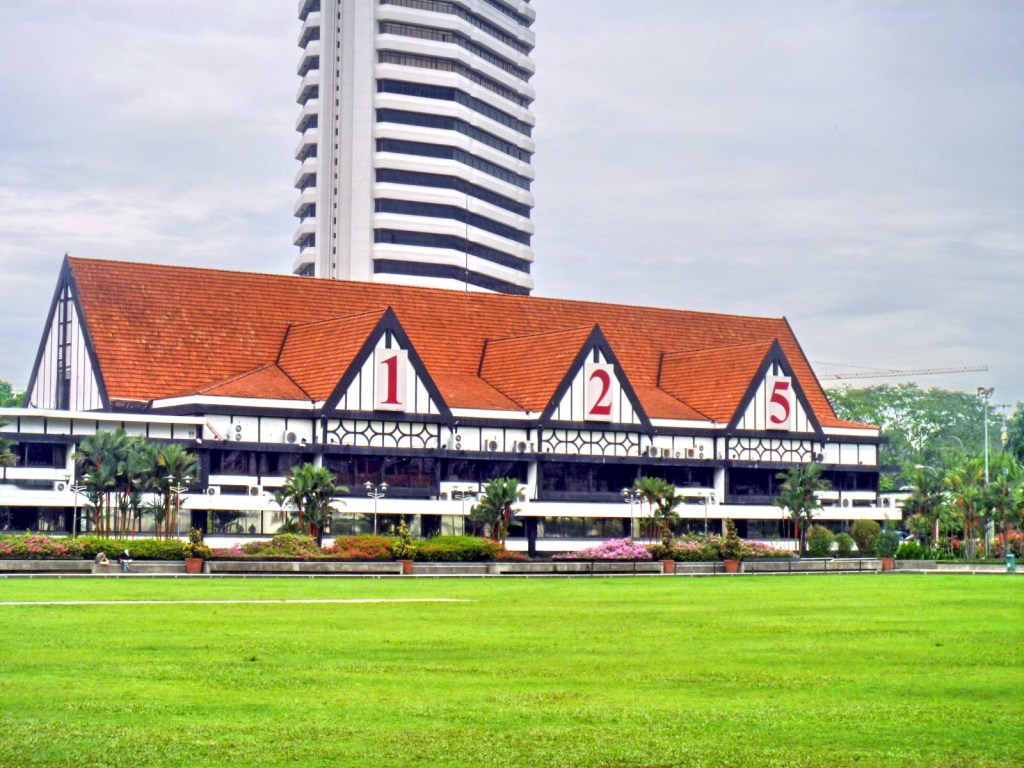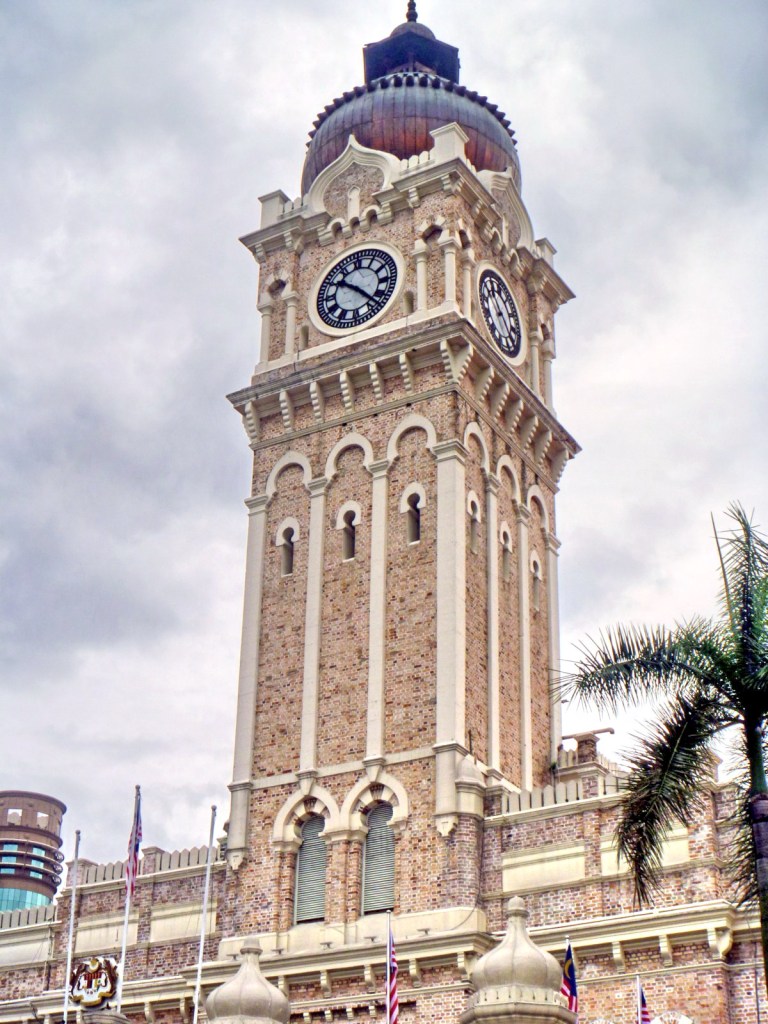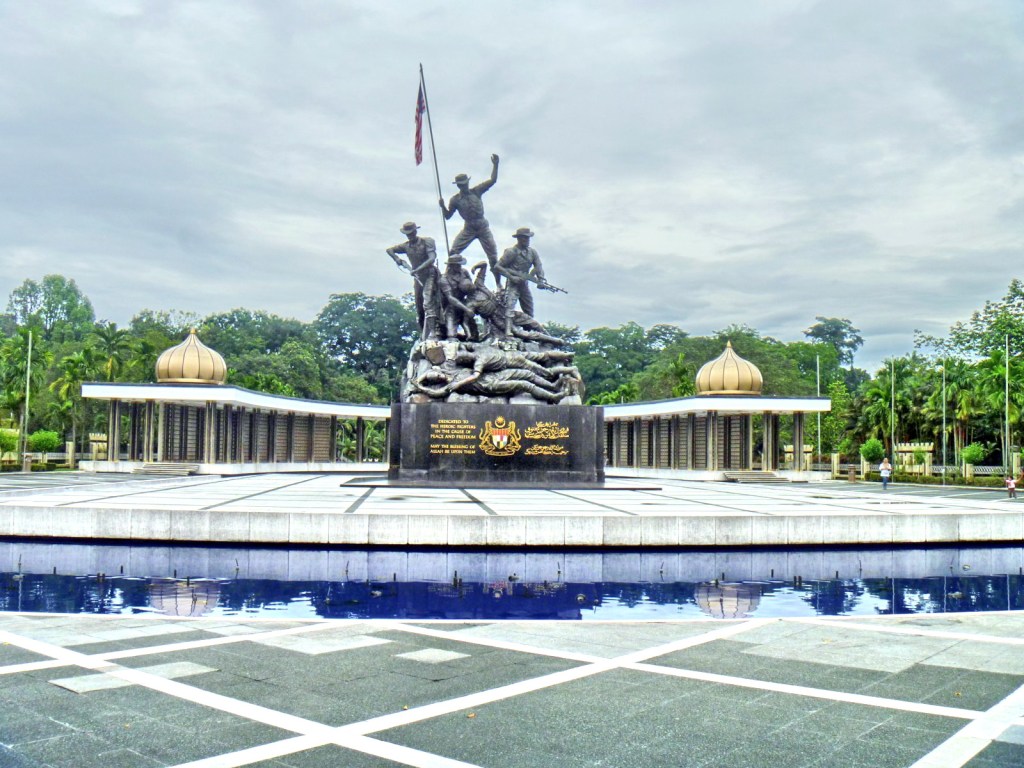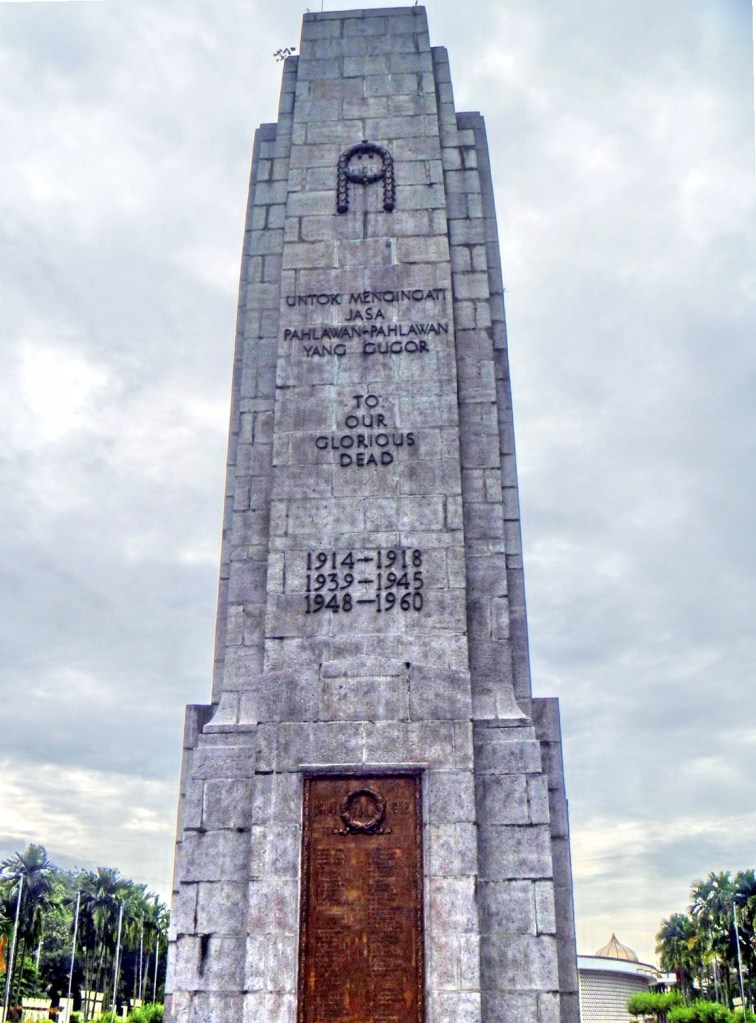From Beryl’s Chocolate Kingdom, we moved on to the Jadi Batek Gallery, a family-owned batik and handicrafts retailer. It has a spacious 30,000 sq. ft. gallery. Though we didn’t buy any of their impressive array of batik and handicrafts merchandise, we did observe, up close, the batik making process.
Batik is a fabric dying method using wax to create patterns and designs. This method makes use of a resist technique; applying areas of cloth with wax (a dye-resistant substance) to prevent them from absorbing colors when the cloth is dipped into dye. Not only as a dye-resistant substance, the wax applied is also used to control colors from spreading out from a particular area to create motif when the dye is painted. The use of batik has also extended from clothing to everything from home furnishings and table cloths to handicrafts.
In Malaysia, there are two major types of batik: hand-drawn batik and block-printed batik. We observed the making of the former. In the hand-drawn batik is usually produced in 4 m. (used for women’s wear) or 2 m. (for men’s wear) lengths. Designs are drawn on the fabric (cotton, rayon, linen, voile and silk) with hot liquid wax by using a metal object called canting.
When the wax outlines are done, artists use the brushes to paint the dyes within the outlines. The use of brush allows for the creation of shaded and multi-hued designs. The fabrics are patterned with floral and geometrical motifs, arranged in various layouts as dictated by current trends. Besides shirt and dresses, hand-drawn batik is also made into scarves, pareos, craftans and even as framed art.
In block-printed batik, the canting is replaced by a copper block or a wooden stamp with artistically patterned bottom. The block is dipped into the wax and printed onto the fabric, which is then dip-dyed. Then the wax will be removed and batik with single color is produced. To create multi-colors and complex batik, waxing with different blocks, dying and de-waxing has to be done many times.
Jadi Batek Gallery: 30 Jalan Inai, Off Jalan Imbi, 55100 Kuala Lumpur, Malaysia. Tel : (60) 3 – 2145 1133. Fax : (60) 3 – 2141 0179.


